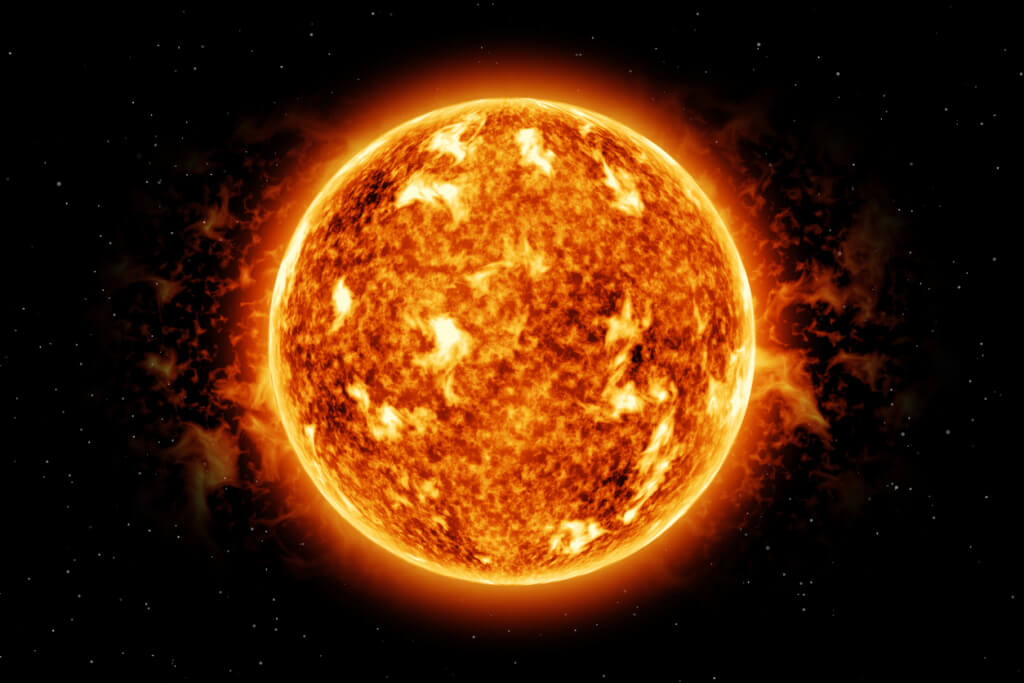The peak of solar activity will come earlier and last longer than previously thought: what is the threat to humanity?
The Sun will reach its current peak activity in 2024, which is a year earlier than previously expected, according to experts at NOAA's Space Weather Prediction Center (SWPC). The publication told in more detail Space.

Photo: IStock
The revised forecast calls for the peak of solar cycle 25, called solar maximum, to occur between January and October 2024, NOAA said in a statement. The peak will be earlier, stronger and longer than forecasts made in 2019.
The solar cycle describes an approximately 11-year period of solar activity, driven by the Sun's magnetic field and characterized by the frequency and intensity of visible sunspots on the surface.
Predictions of the timing of solar maximum are based on long-term historical records of sunspot numbers, modern statistics, and models of the solar dynamo—the flow of hot ionized gases inside the Sun that creates the star's magnetic field, which in turn drives the solar cycle.
On the subject: A period of increased activity has begun on the Sun: what does this mean and what threatens
"We expect the new experimental forecast to be much more accurate than in 2019 and, unlike previous solar cycle forecasts, it will be continually updated on a monthly basis as new sunspot observations become available," the solar scientist said Mark Misch.
The revised forecast is good news for eclipse watchers as the total solar eclipse on April 8, 2024 will occur near solar maximum. During a total eclipse, when the Moon completely covers the solar disk, observers can see the outer atmosphere of the Sun - the so-called corona. During times of increased solar activity, the corona is very active, and eagle-eyed observers can see solar prominences—giant loops of plasma extending beyond the Sun that appear as bright pink spots at its edges.
Accurate forecasts of solar activity are critical because geomagnetic storms caused by plasma ejections called coronal mass ejections can affect power grids, disrupt GPS signals, knock satellites out of orbit and pose radiation hazards to airline workers and astronauts.
Early warning of space weather events can help industries implement protective procedures that reduce risk to equipment and workers.
"We can't ignore space weather, but we can take appropriate measures to protect ourselves," NASA says.
Of course, we are not without natural protection - the Earth's magnetic field.
When the Sun is blasted with energetic particles and magnetic fields during events such as solar flares and coronal mass ejections, the Earth can sometimes find itself in the line of fire.
When this happens, our protective magnetic "bubble" called the magnetosphere pushes harmful energy away from the Earth and traps it in zones called the Van Allen radiation belts. These donut-shaped radiation belts can expand as solar activity increases.
But our protective shield is not invulnerable.
You may be interested in: top New York news, stories of our immigrants and helpful tips about life in the Big Apple - read it all on ForumDaily New York
During particularly severe space weather events, which most often occur during solar maximum, the Earth's magnetic field is disturbed, so geomagnetic storms can penetrate the magnetosphere and lead to widespread radio and power outages, as well as pose a threat to astronauts and satellites on Earth. Earth's orbit. One notable example occurred in 1989, when a storm accompanying a solar flare caused a power outage throughout the province of Quebec, Canada, which lasted about 12 hours, according to NASA.
However, not all magnetospheric interference is destructive: one storm in particular results in the amazing sight of aurors. This phenomenon, known as the northern lights (aurora borealis) in the Northern Hemisphere and the southern lights (aurora australis) in the Southern Hemisphere, is caused by the redirection of energetic particles towards the Earth's poles and their collision with oxygen and nitrogen atoms in the Earth's atmosphere.
Solar activity can have a significant impact on our technological world, so advance notice and accurate forecasts are key to reducing potential damage and, of course, giving aurora enthusiasts the information they need to capture incredible sights.
Read also on ForumDaily:
Millions of Americans should be tested for lung cancer: recommendations have changed in the US
How to get an appointment with a doctor faster in the USA: now the average waiting period is 26 days
Top 3 free attractions in the USA and secrets of visiting them
Southwest Sale: Airfare Available for $39
USCIS has reduced the period for automatic renewal of work permits in the United States
How to find and clean the washing machine filter: it is important to do this regularly
Subscribe to ForumDaily on Google NewsDo you want more important and interesting news about life in the USA and immigration to America? — support us donate! Also subscribe to our page Facebook. Select the “Priority in display” option and read us first. Also, don't forget to subscribe to our РєР ° РЅР ° Р »РІ Telegram and Instagram- there is a lot of interesting things there. And join thousands of readers ForumDaily New York — there you will find a lot of interesting and positive information about life in the metropolis.












